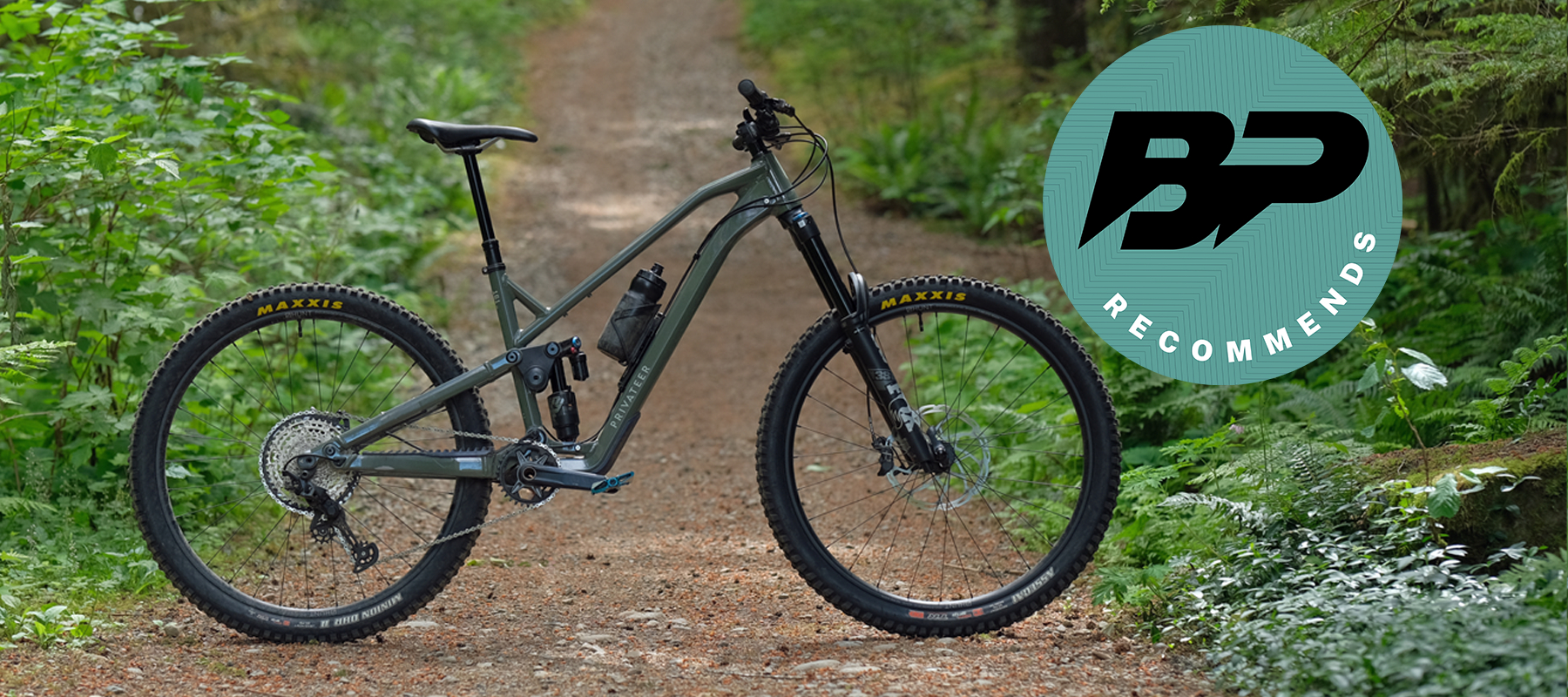Bike Perfect Verdict
The Privateer 161 Gen 2 is a superbly specced and extremely capable budget enduro racer that’s easy to ride fast and confident no matter the terrain.
Pros
- +
Composed traction-rich suspension
- +
Excellent spec and value for money
- +
Dialed geometry gives a balanced ride
- +
Practical do-it-yourself mechanic features
Cons
- -
Hunt Enduro V2 wheels are too flexy for hard cornering
- -
No UDH hanger
- -
Availability
- -
Bring back a raw alloy finish
Why trust BikePerfect
Privateer is a term used to describe a racer competing without the support of a factory team or main sponsor. This usually means the majority of their race season is self-funded, with event entry, travel, equipment, and general expenses all coming out of the rider's pocket. Tight purse strings mean Privateer racers demand a fast race bike that's also affordable and durable enough to last an entire race season.
Privateer Bikes was established to build bikes for this exact remit, with race-ready performance, practical features, and high-spec construction at a competitive price. The original 161 enduro bike did just that and was a massive hit with its extremely progressive geometry, sleek looks, and unmatched value.
It must have been a tough act to follow but after three years of development, Privateer launched the 161 Gen 2. The bike has a load of new updates but still seeks to deliver an affordable race bike that can compete with the best enduro bikes on the trail.
Privateer says the 161 Gen 2 is “built to be ripped and raced out of the box and provide seasons of trouble-free hammering”. To test whether the Privateer 161 Gen 2 has the performance and the durability to complete a season of racing, I put the Privateer 161 through an intensive month of testing with 24 days of back-to-back riding on some of the most challenging terrain across British Columbia, riding everything from bike park to backcountry to find out how it performs.
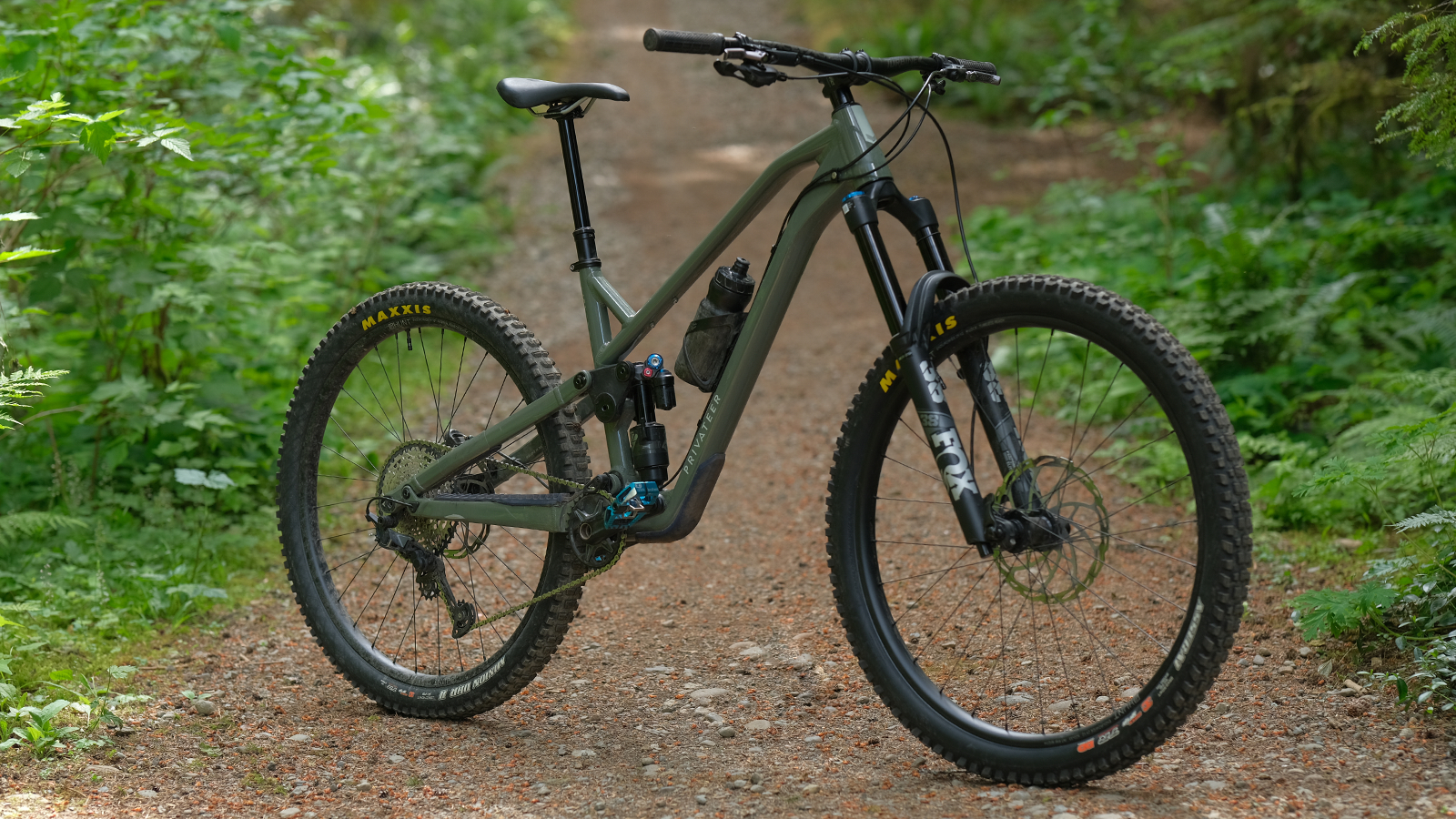
Design and geometry
For the second generation of the 161, Privateer has made several changes to the frameset. Gone are the flowing tube shapes in favor of a more utilitarian vibe. The 6061 alloy frame has a more angular aesthetic with straighter tubes, the striking flattened lower section of the downtube, and a hunched top tube. The changes in tube shapes weren’t simply an aesthetic cue, the top tube kink adds clearance to run a properly sized water bottle and under-top tube tool storage on all frame sizes, even if it may come at the sacrifice of aesthetical points in some people's eyes. Unlike the top tube, the seat tube has been straightened and is now uninterrupted to maximize compatibility with the longest dropper seatposts.
The new compact forged one-piece rocker rotates on burly frame pivots to ensure no flex in the rear end and eliminates the need for a seat stay bridge to offer plenty of mud clearance around 2.5in tires. Privateer has used 42mm Enduro Max bearings with secondary o-rings between the pivot bolts and frame to keep the dirt out and your suspension running smoother for longer. Hardware is single-sided too for quick and simple maintenance and bolt checks.
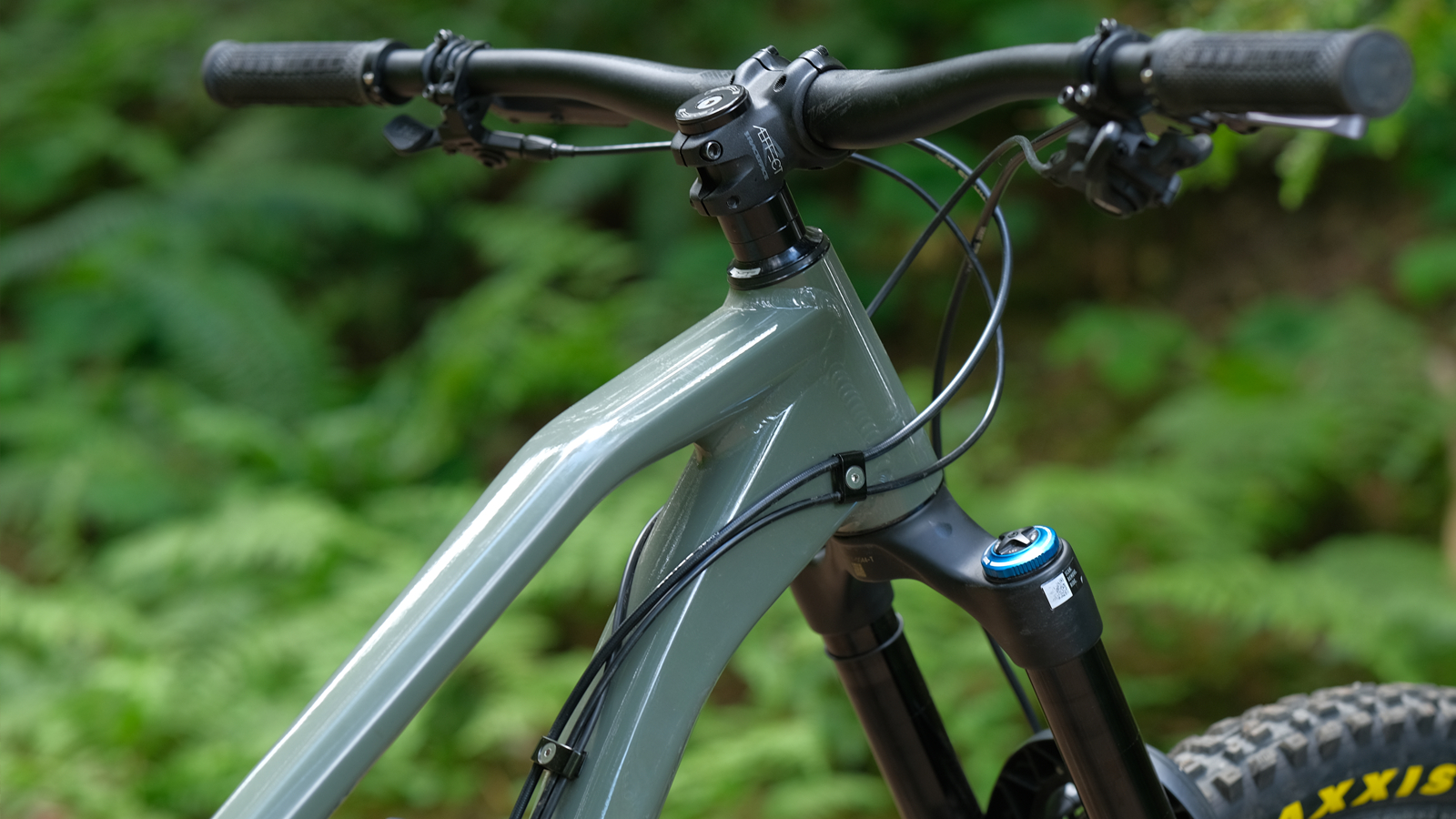
Home mechanics can rejoice as there is a threaded bottom bracket shell and external cable routing. The outers and hoses are clamped with bolted cable guides to keep cable rattles at bay and neatly run along the top of the downtube. The rear brake is fully external, while the gear cable ducks into the chainstay to avoid any damage from the chain.
Rear wheel size can be switched between 29in or 27.5in with geometry being maintained between the two wheel sizes with a flip-chip at the top of the seat stay, the 161 Gen 2 comes standard with 29er wheels (P1 complete bikes ship as a mixed wheel). There is a second flip-chip positioned at the rear drop-out which allows the rear center (chainstay length) to increase by +10mm for added stability if needed.
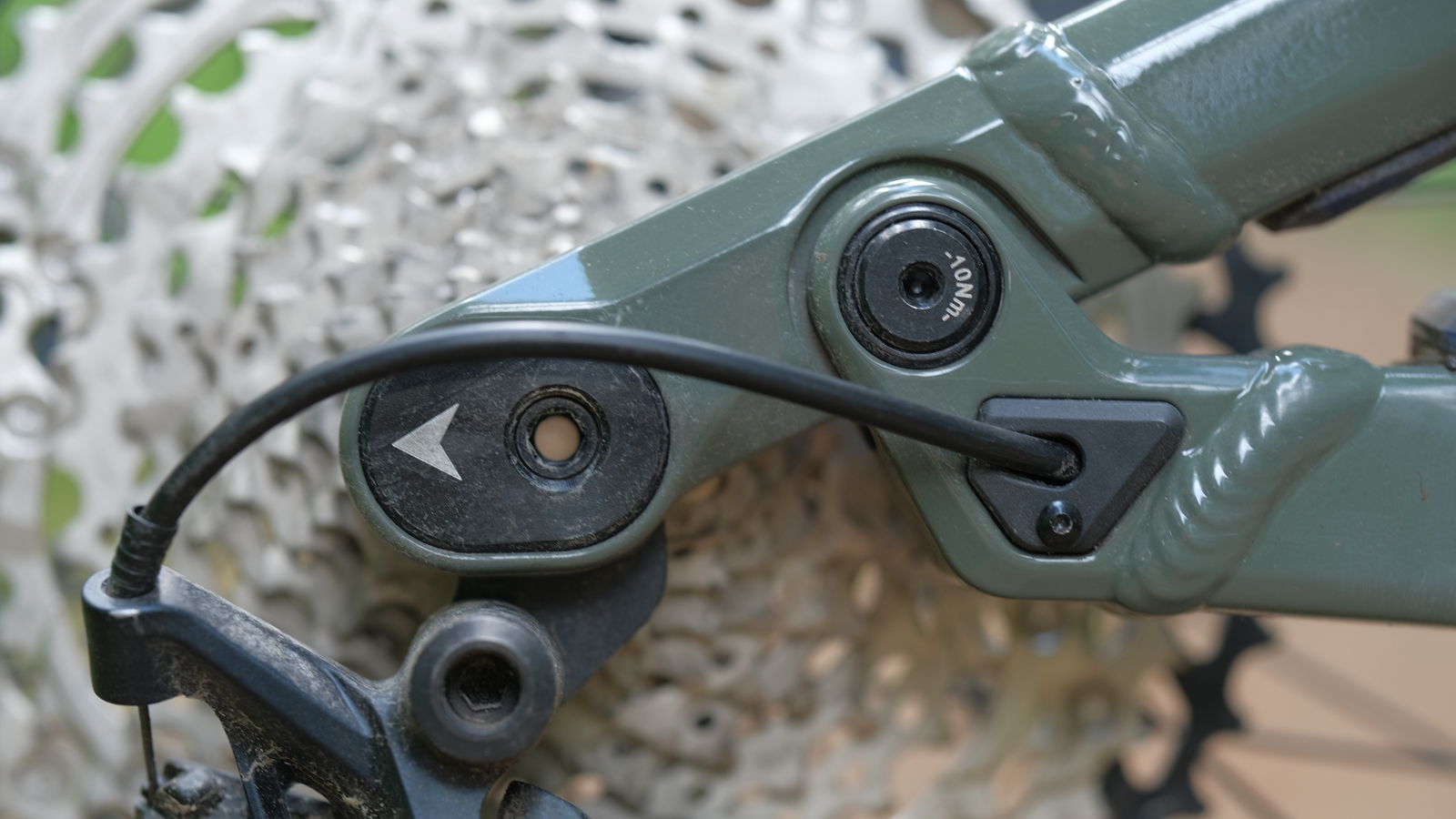
There is only one practical detail missing, the frame doesn’t use SRAM’s UDH (universal derailleur hanger), sacrificing simplified hanger replacement and compatibility with SRAM’s latest T-Type drivetrains in favor of that rear center flip-chip adjustment.
The 161 Gen 2 features Privateers A-L-P Suspension (Aligned Linear Progression) Horst link platform which is said to have been designed to be super predictable and easy to ride hard. Kinematics were reworked and the 161 Gen 2 now features a very progressive leverage ratio and more consistent anti-rise and anti-squat numbers. The leverage ratio starts at a 3.6:1 ratio for a very supple initial stroke, dropping down to 2.2:1 for a very progressive linear ramp-up to absorb large impacts. Privateer says it increased and flattened the anti-rise figures and anti-squat numbers to keep the suspension more active during hard braking and offer more support when pedaling in all gears.
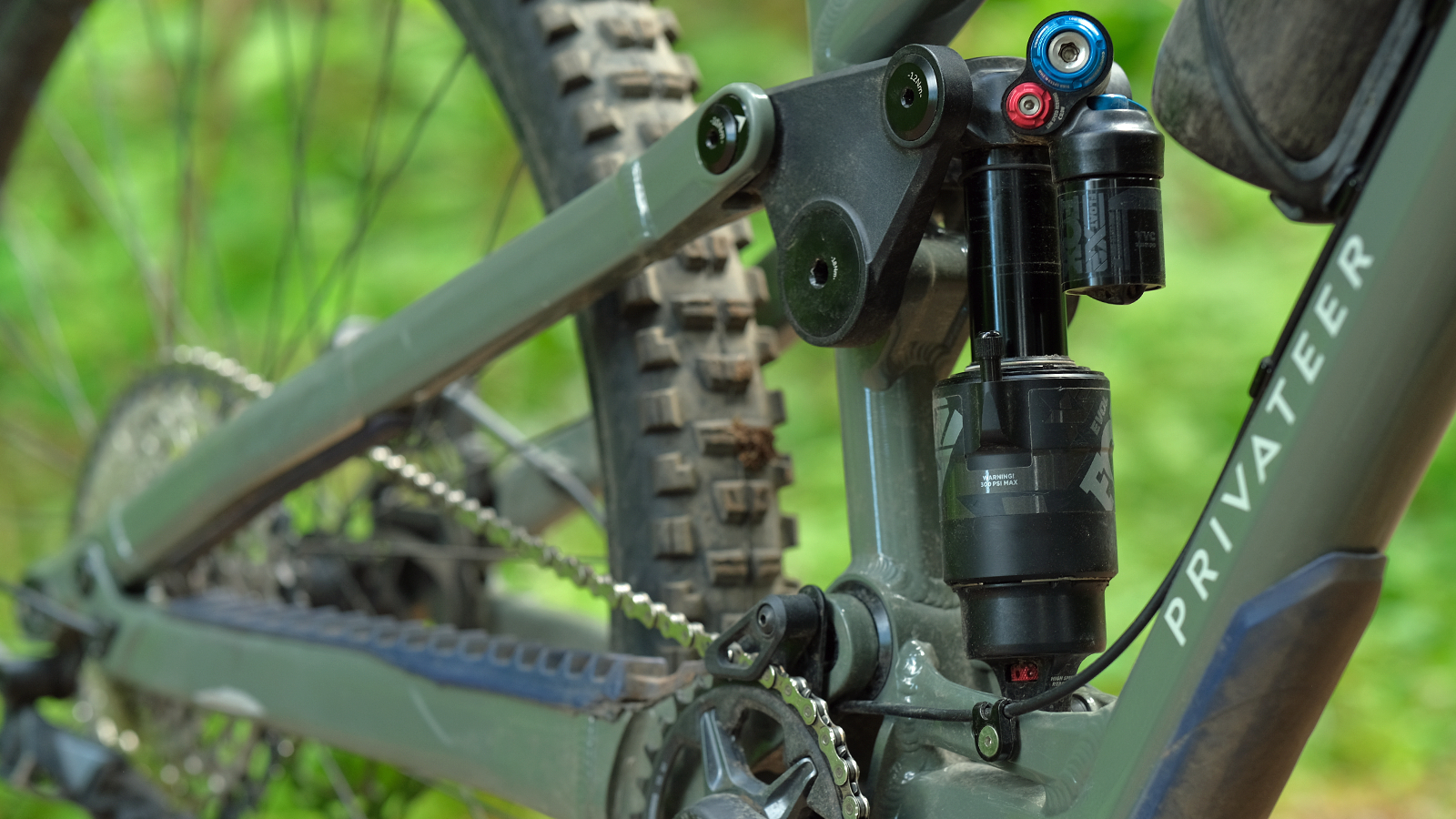
Both the 161 Gen 2 frameset and complete build come with an air shock but Privateer says that coil shocks are also compatible, assuming it fits in the frame (Fox and Ohlins are confirmed to fit). It’s also possible to increase the rear wheel travel from 161mm to 174mm by fitting a longer 65mm stroke shock. If you want to get really rowdy Privateer says the 161 Gen can be equipped with a dual crown forks up to 200 mm travel.
Despite being five years old, the geometry of the previous generation 161 was still bang up to date so Privateer only made minor tweaks when transposing it to the Gen 2. The 490mm (large) reach, 64-degree head angle, 80-degree effective seat tube angle, and 30mm bottom bracket drop are all still right on the money for an enduro bike. The 161 Gen 2 gets a 9mm higher stack height and the size-specific rear center length is now either +/- 5mm depending on the flip-chip position.
The only update that's a little disappointing is the 161 Gen 2 is only available in green, which is a shame as I much preferred the silver finish of the first-generation and prototype second-generation bikes.
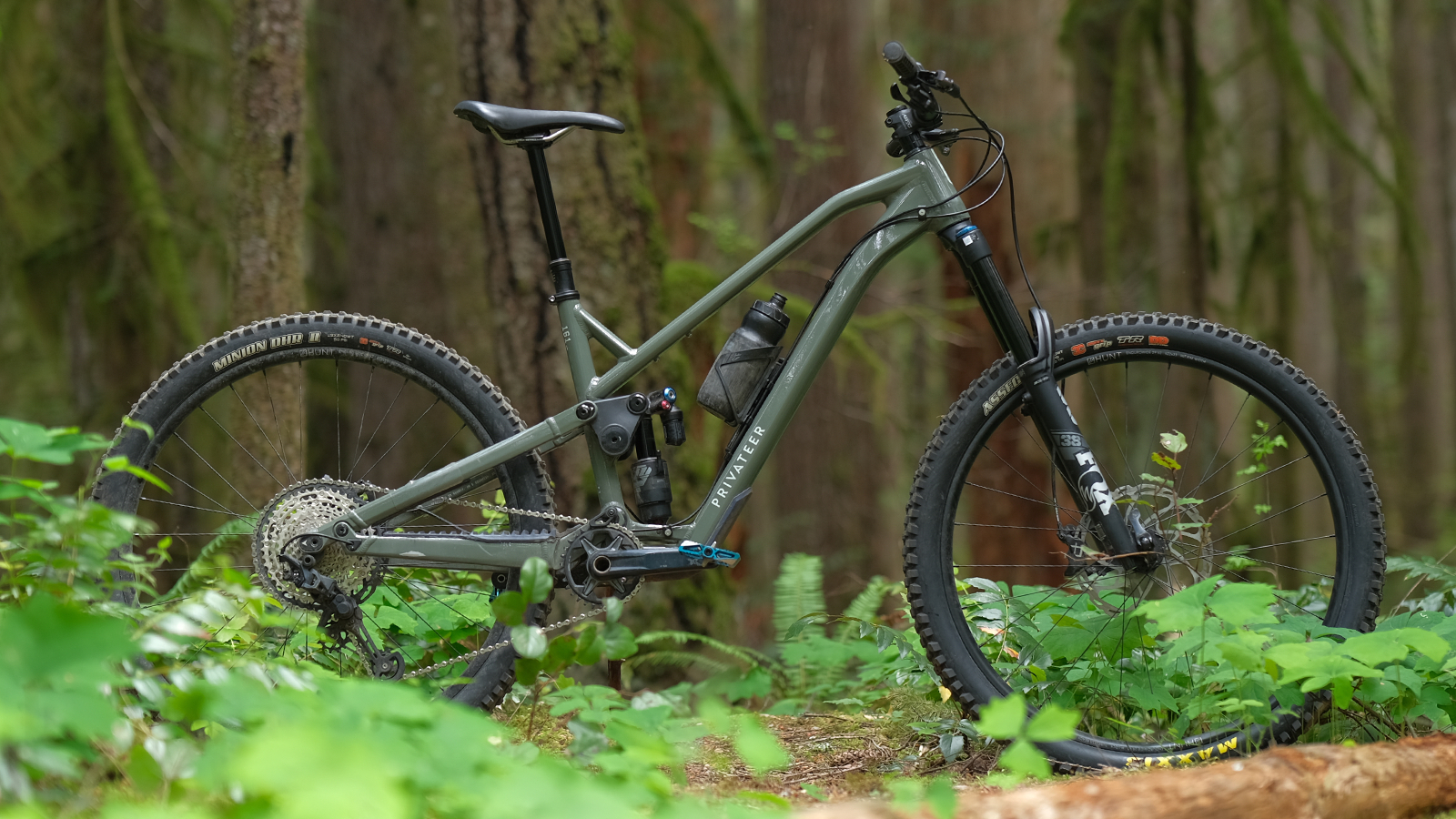
Components and build
The 161 Gen 2 comes in a single-build kit or as a frame-only option. Privateer has done an excellent job at balancing costs without sacrificing too much performance. A Fox 38 Performance fork features a Grip 2 damper with high and low-speed adjustment for compression and rebound giving all the tuning options of the Factory suspension without the Kashima tax. A custom-tuned Fox Float X2 Performance Elite mirrors the adjustment range in the back with the addition of a two-position Open/Firm lever.
You can’t ride fast if you can’t stop fast, so Privateer has made sure there will be no problems on that front with Hayes’ Dominion A4s biting down on large 220mm front and 200mm rear disks. It's also great to see an affordably priced enduro race bike delivered with proper tires. Privateer choosing a dependable combo of Maxxis Assagai Double Down front and Minion DHR II downhill rear, both in the sticky MaxxGrip compound. Privateer is part of the Rider Firm umbrella along with Hunt wheels, so it's no surprise to see a set of Hunt Enduro Wide V2 wheels with 33mm front/31mm rear internal diameter rims and a spritely five-degrees of engagement fitted.
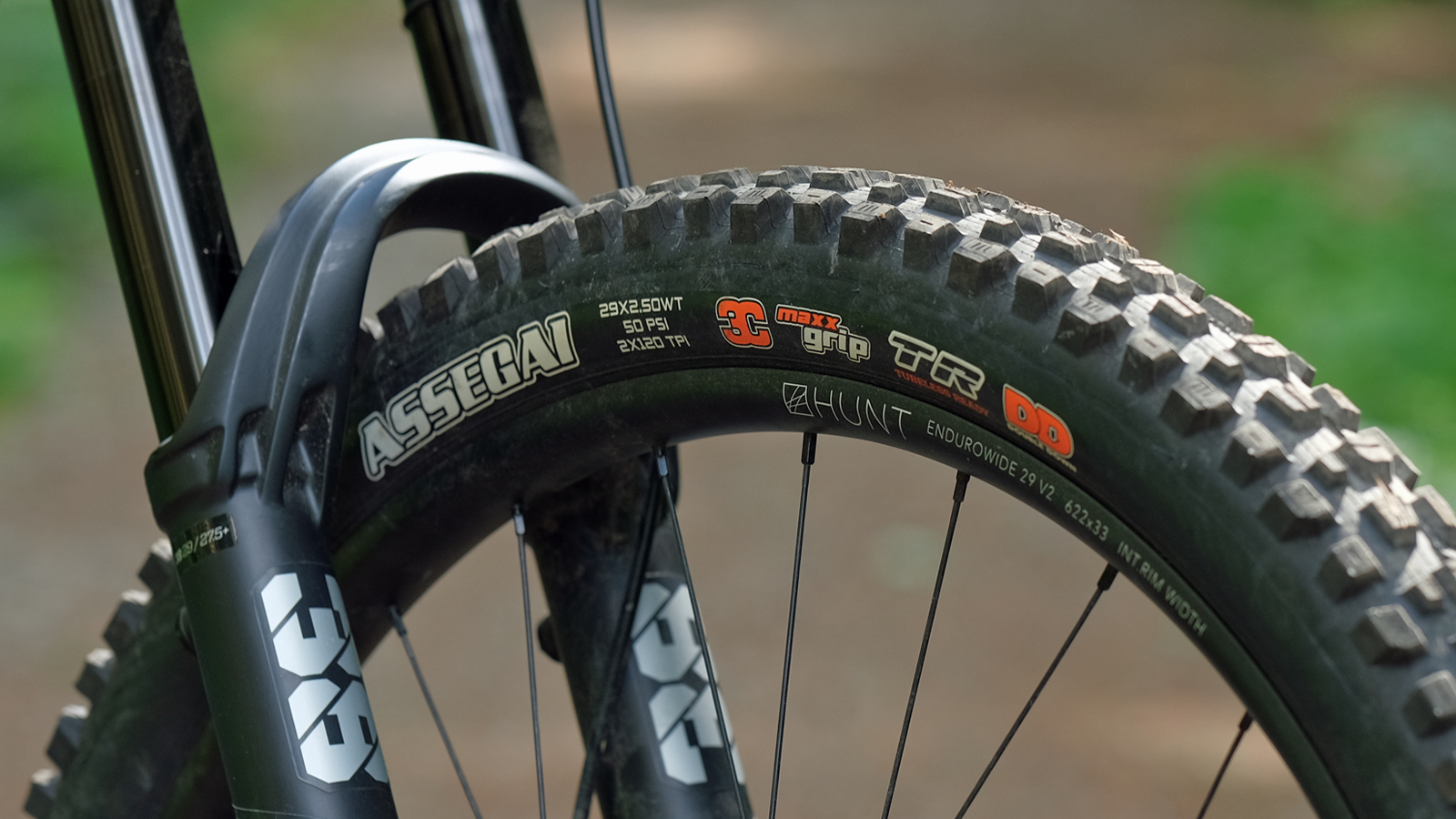
A Shimano drivetrain has been carefully curated, featuring SLX derailleur and cassette but pairing them to an XT shifter for a slicker gear change. Race Face alloy bars and stem take care of the steering and the One Up dropper offers a lengthy 180mm of travel. Even the Privateer grips and saddle are good quality kit that I would be happy to run.
The first generation of the 161 was outstanding value, the 161 Gen 2 has had a bit of a price hike and can’t quite match the bang for the buck that the original offered. It’s still one of the best-value bikes on the market and even with the plethora of enduro bikes around the £4000 mark these days, few come close to matching the out-the-box, ready-to-race spec of the 161 Gen 2.
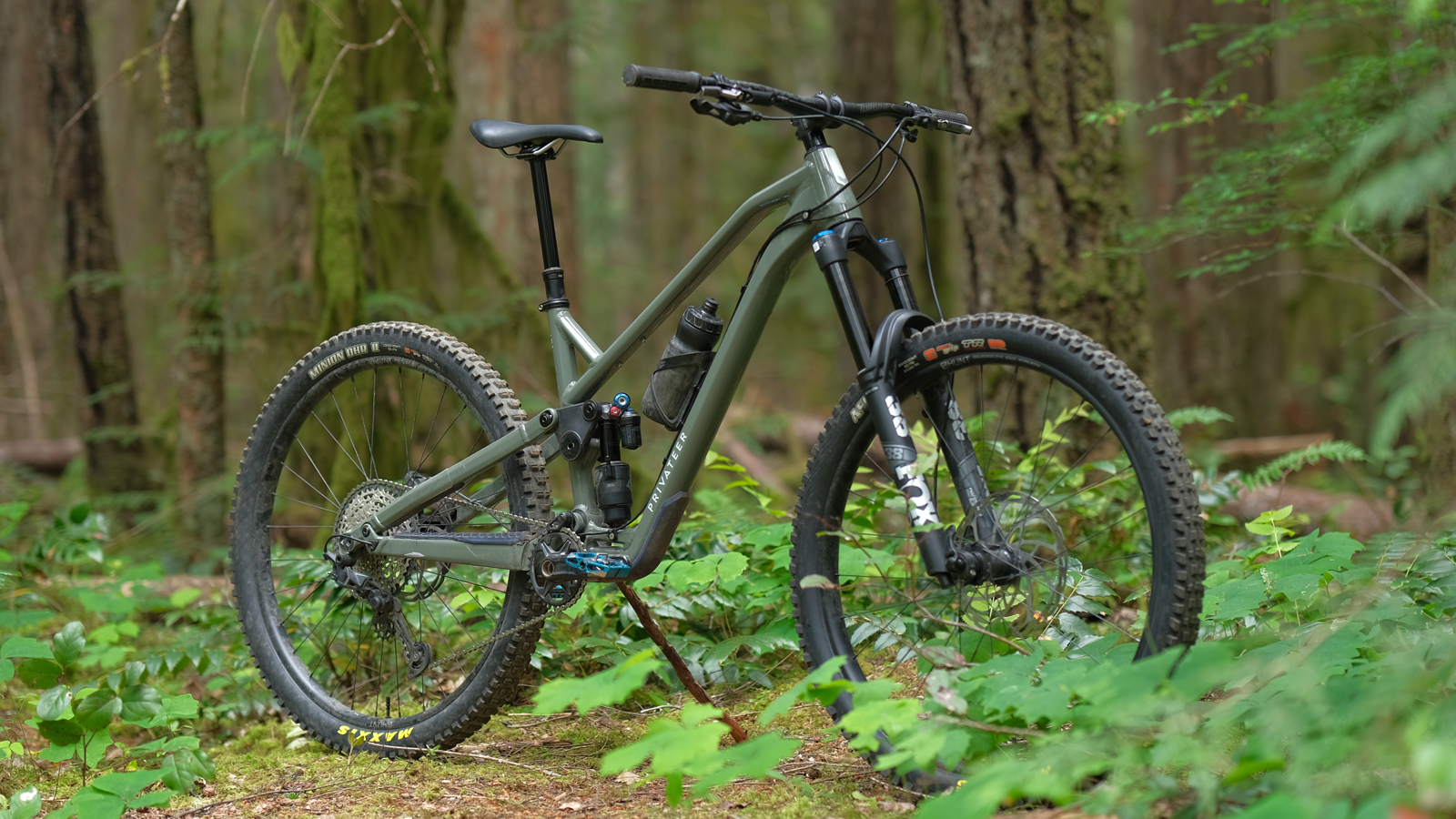
Ride and performance
The 161 Gen 2 was designed to be an enduro race bike, so it's not that surprising that the 161 Gen 2 is fast when pointed down the trail. What surprised me was how easy it was to ride quickly and the way it would gently lure me into going faster. The soft initial stroke of the suspension and stable geometry give the bike a very calming nature and can result in a subconscious upping of pace. When you purposely start turning up the intensity the 161 Gen 2 remains unfazed. The suspension maintains its composure when charging down trails and when faced with large impacts and landings the progression curve didn't feel like the suspension on offer was throttled or suddenly ramping up in resistance as I approached full travel. Stout alloy construction ensures that when you’re fully committed to slamming it into sections the bike doesn’t start feeling unsure of itself and will continue to move in the direction you point it. With this in mind, it's easy to push hard into unknown terrain knowing that the 161 Gen 2 is going to look after you. Most of the trails I rode on the 161 Gen 2 were ridden blind, yet I had no problem ripping through sections as if it were my local lap.
It's not just a plow for sending the rowdiest trails, the progressive leverage ratio of the A-L-P platform ensures the suspension is still active at slower speeds. The rear suspension's aggressive ramp-up keeps the initial stroke supple so it won’t punish you if you let off the gas or need to negotiate a slower-speed technical section while still offering the bottom-out resistance needed to combat big impacts. The 161 Gen 2 composure instills confidence when tackling slow-speed tech, like the rock slabs of Squamish or wood features on Vancouver's North Shore, by maintaining a predictable level of grip through tight maneuvers. The ramp-up also provides plenty of mid-stroke support so although the initial dip into travel is willingly offered up it doesn’t feel overly glued to the ground or whallowy when you need to gap something or pump through compressions.
There’s a lot of cross-over between sizing giving flexibility in sizing and, based on Privateer’s sizing charts, I sit right in-between sizes P2 and P3, I opted for the larger P3 as I would be riding fast, rough trails where the extra stability of the long 1287mm wheelbase would be a benefit. The P3 is a big bike but the 30mm bottom bracket drop, centered riding position, and supple initial suspension stroke ensure grip and predictability to enhance quick changes of direction and I could confidently drive the bike through successive corners without feeling like a passenger. It wasn’t until I rode the tight and technical trails on the North Shore that the P3 sizing could become more of a handful. With its 475mm reach, there would be plenty of room for me to size down to a P2 for better agility and run the +/- 10mm rear-center flip chip in the long position on faster trails if needed, which would be better suited to my local trails that slink through the tightly packed forests of the Tweed Valley for example.
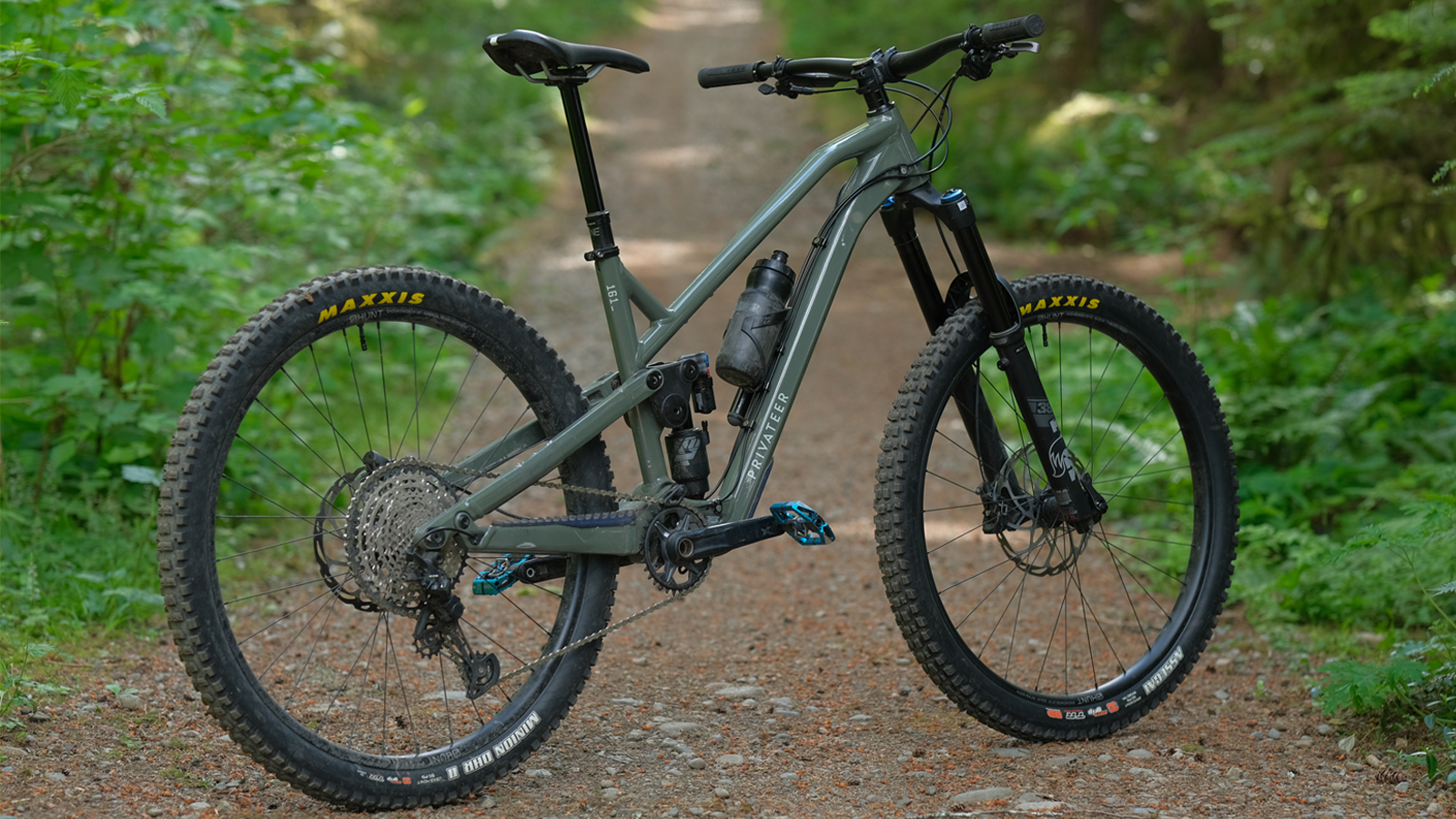
With a weight of 18.5kg, the Privateer 161 is a heavy bike, the combination of alloy frame, overbuilt hardware, alloy wheels, and thick casing tires adds up although I never felt that it held me back that much. I could still easily pick the bike off the ground and throw it around when the trail demanded. On climbs, the steep seat tube angle makes the long reach feel effectively shorter, putting me in a comfortable position to gather up elevation efficiently. Suspension is well-behaved when climbing too so although there is a little extra heft that needs to overcome the forces of gravity, every bit of the pedal stroke drives the bike forward and I rarely felt the need to flick the shock from open to firm on the ups. On smoother climbs and access roads, it will happily plod along although riding the longer P3 did mean technical climbs were more of a handful. Pedal strikes were an important consideration on the climbs too as the combination of the 30mm bottom bracket drop and the rear suspension's eagerness for bump absorption dramatically reduces the up-and-over climbing clearance.
Despite being subjected to some of the most demanding terrain in the world and a very hectic ride schedule, the 161 required almost zero maintenance throughout testing. Privateer's careful component consideration plays a big part here delivering an infallible mix of reliability and performance. Although there is very little I would change to the spec, there are a few things worth noting. The Fox suspension has plenty of adjustment to tweak set up although the ultra-progressive rear suspension meant it was tricky to balance the fork and shock out the box, I suspect this could be easily resolved by fitting a volume spacer to the fork to increase its progressivity although I didn't have any to hand to put that to the test. While the Hunt wheels offer a forgiving and traction-enhancing ride which is great on loose off-camber trails, after back-to-back days at Whistler bike park I found the spokes began to loosen and feel vague. If you’re regularly hitting the bike park or frequently slamming ruts you will want to increase the spoke tension to help keep the rear wheel precise and on track. The alloy rims also suffered a few minor dents which is part of the course with alloy rims but despite this, they remained straight and airtight throughout testing. The only real component-related issue I had was a clicking noise from the front of the bike that was hard to diagnose. I regreased the headset and did a complete front-end bolt check to no avail, I suspect tolerances of the cast Race Face Aeffect R. stem to be the cause but that would be an easy upgrade to fix if needed.

Verdict
There is no doubt that the Privateer 161 Gen 2 is a fast bike but what's most impressive is it's not a bike that demands to be ridden hard. Whether I was cruising my first lap warmup, pacing myself on a long descent, or hammering a trail as if I were against the clock the predictability of the progressive A.L.P suspension kinematic provided active and controlled suspension performance. Even though the geometry has essentially been copied and pasted from a bike from 2019, it’s still bang up to date and gives a balanced centered-in-the-bike feeling to ensure maximum control.
This gives the 161 Gen 2 a well-mannered and confident ride quality that gently encourages fast riding. The ease of riding at pace gave me the confidence to attack trails, safe in the knowledge that the 161 Gen 2 would make sense of rock gardens and rutted root sections when riding got hectic.
Although the 161 Gen 2 doesn’t hatch the outstanding affordability of the first generation 161, the fact that I rode this bike daily for almost a full month and it required nothing more than a rear wheel spoke retention shows just how much value a properly specced, fit-for-the-job bike will offer. I didn’t baby it either, big days on the trail in all weathers, including 11 days of bike park plus a load of shuttling too, meant vertical descent racked up quickly, yet the 161 Gen 2 took it all in its stride, something which can’t be said for the other bikes on this epic trip.
| Attributes | Notes | Rating |
|---|---|---|
| Downhill performance | Easy to ride fast and very capable | ★★★★★ |
| Uphill performance | It's heavy but suspension is is well controlled and geometry is comfortable | ★★★ |
| Components and build | Excellent spec with tuneable Fox Performance suspension, powerful brakes, and dependable drivetrain | ★★★★★ |
| Value for money | Ready to race out the box | ★★★★★ |
Test conditions
- Temperature: 50 to 95 degrees F / 10 to 35 degrees C
- Conditions: Wet, loamy, baked hardpack
- Trails: Natural tech trails of British Columbia with roots and rocks and machine built bike park
Tech specs: Privateer 161 Gen 2
- Frame: 6061-T6 Aluminium. 161mm Travel.
- Fork: Fox 38 Performance Elite, 44mm offset, 170mm travel
- Shock: Fox Float X2 Performance Elite, Custom Tuned, 205 x 60.
- Drivetrain: Shimano SLX, 12 Speed with an XT shifter
- Brakes: Hayes Dominion A4 4 piston brake, 220mm/203mm
- Wheelset: HUNT Enduro Wide V2
- Tires: Maxxis Assegai 29x2.5", MaxxGrip, Doubledown/TR | Maxxis Minion DHRII 29"x 2.4", 3C/DH/TR, MaxxGrip
- Bar and stem: RaceFace Turbine. 800x20, RaceFace Aeffect R. 40mm
- Seatpost: OneUp 1.6mm P1 = 150mm, P2-P4 = 180mm
- Saddle: Privateer Cro-Mo rail
- Sizes available: S1, S2, S3, S4
- Price: $4,989 / £3,989
- Weight: 18.5kg (claimed)

Graham Cottingham joined the BikePerfect team as our senior tech writer in 2020. With over 20 years of riding experience, he has dabbled in downhill, enduro, and gravel racing. Not afraid of a challenge, Graham has embraced bikepacking over the last few years and likes nothing more than strapping some bags to his bike and covering big miles to explore Scotland's wildernesses. When he isn’t shredding the gnar in the Tweed Valley, sleeping in bushes, or tinkering with bikes, he is writing tech reviews for BikePerfect.
Rides: Cotic SolarisMax, Stooge MK4, 24 Bicycles Le Toy 3, Surly Steamroller
Height: 177cm
Weight: 71kg
